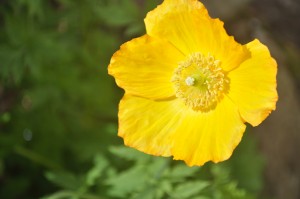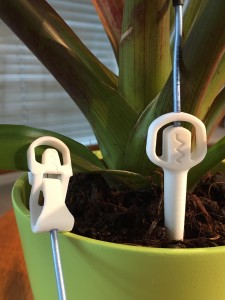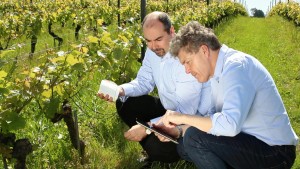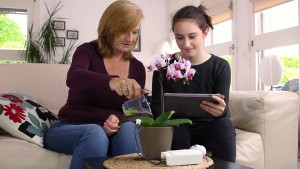Carol Plummer; engineer, entrepreneur and co-founder of Vivent tells us more about this fascinating subject…
Recently there’s been lots of talk in the biology community about whether plants are intelligent. It is an interesting question to consider. What is intelligence? In plants? In people? Do you need a brain to be intelligent? If something is more intelligent than something else does that lead to greater success? How do we measure success?
 If you were visiting earth for the first time and looked at our entire ecosystem you would certainly think that plants are the most successful living beings. They make up more than 97% of the living biomass on earth and the vast majority of plants can happily survive without the interventions of humans or even other animals. In fact many plants can survive if they are severely damaged, split in half or pruned to nearly nothing. Humans however could not survive for even a short period of time without plants and we certainly don’t survive when any of our important organs are missing.
If you were visiting earth for the first time and looked at our entire ecosystem you would certainly think that plants are the most successful living beings. They make up more than 97% of the living biomass on earth and the vast majority of plants can happily survive without the interventions of humans or even other animals. In fact many plants can survive if they are severely damaged, split in half or pruned to nearly nothing. Humans however could not survive for even a short period of time without plants and we certainly don’t survive when any of our important organs are missing.
 In spite of this, most people don’t think of plants as intelligent – but they respond to a surprising number of stimuli. Some are those that you would expect, like light or water but others are more unexpected like touch, scents, the presence of people or animals, or the condition of neighbouring plants.
In spite of this, most people don’t think of plants as intelligent – but they respond to a surprising number of stimuli. Some are those that you would expect, like light or water but others are more unexpected like touch, scents, the presence of people or animals, or the condition of neighbouring plants.
Electrical signals in plants were discovered by a British scientist (Burdo-Sanderson) more than 100 years ago using a Venus Flytrap. Research has continued but because the signals are tiny in comparison to background electromagnetic noise, experiments are nearly always done in tightly controlled laboratory conditions. At Vivent, we have developed a technique that will enable plant enthusiasts to see or hear these signals from their own plants in everyday conditions. This is a big technical breakthrough that will open new avenues of research and new ways for people to connect with plants.
 Our research using the Phytl Signs devices is in its early stages and we are learning new and exciting things nearly every day – from simply observing plants and their response to their environment. For example,
Our research using the Phytl Signs devices is in its early stages and we are learning new and exciting things nearly every day – from simply observing plants and their response to their environment. For example,
we see different levels of electrical signaling activity during different periods of the day, and we’ve observed increased electrical signaling in plants at the same time as the recent solar storms and preceding local lightning storms. These are not necessarily variables that I would have considered tracking when thinking about plant health.
 As quite a busy person, I’m not great at actually taking time to observe – I’m normally in action mode. Part of the joy of using the device we’ve developed is, for me, the little reminders to have a closer look or pay attention, in the form of sounds from my plants. I’m definitely interacting with plants in a much richer way because of the device.
As quite a busy person, I’m not great at actually taking time to observe – I’m normally in action mode. Part of the joy of using the device we’ve developed is, for me, the little reminders to have a closer look or pay attention, in the form of sounds from my plants. I’m definitely interacting with plants in a much richer way because of the device.
These reminders from my plants are also helping me do more observing of what’s going on around me, focusing on my children, husband and friends, my environment, both physical and cultural. I’ve been looking more closely at how people interact in those first few moments of meeting when you might gauge a lot about how people are doing, physically and emotionally. I’ve then let the conversations develop based on what I’ve picked up rather than rushing straight to my own agenda. It’s funny what you can learn from plants…
Carol
Phytl Signs has just launched a kickstarter campaign to help develop their technology. See here for more information.
